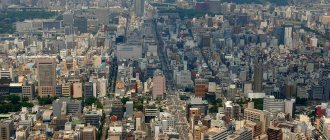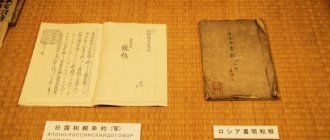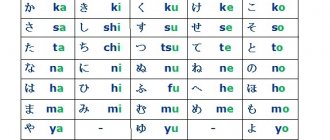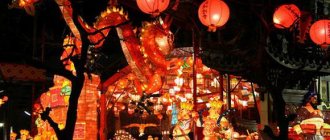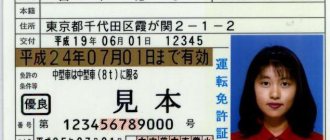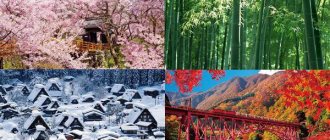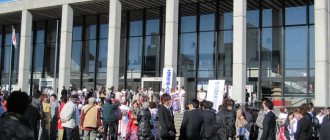Thinking about visiting Japan in winter? Not yet? What if we say that a trip to Japan from December to February is more like a vacation in a fairy tale? Just imagine all these lights of big cities, amazing illumination, snow-capped mountain slopes and open spaces! Overall, if you like the idea of a winter wonderland vacation, we've rounded up the top five places to visit in this article.
Winter in Japan: Hakuba, Nagano
Bindings, snowboards, boots and onsens. Don't these words sound like a melody to you? Haven't you felt a desire to return to this lightest snowy land again? If not, then you simply haven't tried winter sports in Japan.
Everyone who has skied at least once during a winter trip to the Land of the Rising Sun will agree: there is no such snow anywhere in the world. Many people come here to learn how to snowboard or ski, even if they have never tried them before. And in the end, it's extremely fun! The instructors are always very friendly and up to date and are extremely qualified. They speak good English and spend the entire year traveling the world, hunting snow fronts in a variety of countries. Under their guidance, you will become a master of sports in a matter of seconds.
And if you have children, have no doubt: they will become masters of sports the very moment they step onto the territory of the ski resort. We saw five-year-olds skillfully conquering the snowdrifts and Hakuba plains, covered with untouched dry snow. They followed their incredibly patient instructors as if attached! In short, winter is a wonderful time of year for a family vacation.
Hakuba has hotels and activities to suit every taste: European or Japanese? Hotels or ryokans? Skis or snowboard? Fast food or fine dining? Traveling through quiet forests on snowshoes or riding on steep ski slopes that get adrenaline pumping in your blood? The choice is yours: just tell us what you want and we will find it for you.
By the way, until now we have not talked about the most important thing. This majestic mountain range is located in an area with a constant flow of thermal waters. Therefore, after a long, exhausting day on the ski slope, you can plunge into the hot waters of the springs, relaxing your overworked muscles, resting your body and soul.
And by the way, don’t forget about the Jigokudani Snow Monkey Park. In our opinion, every tourist should see these monkeys. In a word, you can see for yourself: the list of things that can (and should!) be done in Japan in winter is truly endless!
Hot Summer
The climate of the metropolis differs from the general climate in the country. Scientists have found that the average daily temperature is influenced by buildings and communications, and people’s behavior also makes its contribution. Thus, in Tokyo this figure is 4 degrees higher than in the rest of the region. Summer in the capital is long and stuffy, if you do not take into account the humid season. It ends almost in November. Spring doesn't come all at once either. All its signs can clearly be seen only in early May.
The heat in Tokyo is different from what residents of the continent are used to. It is wet, which makes it more difficult to bear. People find it difficult to breathe, have no appetite, and no desire to move. You need to get used to this season so as not to suffer from the stuffy, sweltering heat. The Japanese and tourists resort to green tea or fruit water; a favorite summer treat is kakigori. It is advisable to keep and consume drinks chilled.
Light clothing is encouraged to help cool the body. Public areas are usually equipped with air conditioning. In the summer, the Cool Biz campaign begins at enterprises and organizations, which, on the one hand, allows workers to endure the heat more easily, and on the other hand, use air conditioners less often. This is done in order to save electricity, the supply of which is limited in Japan, and to reduce the negative impact of air conditioners on the environment.
The crowd of people in the metropolis makes the heat worse. Roads and buildings absorb heat from the sun's rays and prevent people from resting at night. They release the accumulated heat to the surrounding space. Scientists have noticed that the average daily temperature rises by half a degree every year. People on city streets are increasingly suffering from heatstroke. By the way, the operation of a large number of air conditioners also does not contribute to the coolness outside the windows of the rooms in which they refresh the air.
Local residents are used to the sweltering season. They protect themselves with traditional green tea and comfortable clothes. During hot weather, handkerchiefs and napkins are sold everywhere to wipe away sweat. Interestingly, there are no deodorants in Japan.
No, after all, there are deodorants, but not quite in the form that is familiar to us, although the classic ones are also available for sale. The Japanese, unlike Europeans, tolerate heat more easily and practically do not sweat, so local residents do not need them, and foreigners bring these personal hygiene products from their homeland.
The Japanese government is concerned about the constant warming of the climate and, as a result, an increasing number of people suffering from the effects of heat. A temperature of 35° no longer surprises anyone. Combined with high humidity, this is an explosive mixture for the human body. The risk group consists mainly of children and the elderly.
Moreover, on the eve of the 2021 Olympics, the authorities are thinking about how to ensure a comfortable stay for people on the city streets and indoors. In this regard, new technologies and systems are being developed. In 2021, islands of fresh and cool air, developed by Panasonic, were installed in Tokyo; climate and cooling are created using environmentally friendly air conditioning.
Shirakawa-go - a wonderful introduction to Japanese winter
There's a lot more to Japan than skiing, though, isn't there?
Winter in Japan is different from winter in our country: it is more exotic and, one might say, has its own culture. During a winter trip to the Land of the Rising Sun, you can combine skiing with a marvelous journey through unexplored but charming corners of Japan. Since you've come so far, why not get the most out of your airfare?
We have good news: within easy reach, you can discover places that are astounding in their quaintness and beauty. One of them is Shirakawa-go. This tiny village, located deep in a quiet valley, remained little known until a tunnel was dug through the high mountains surrounding it. It was then, just about 10 years ago, that Japan and the world “discovered” Shirakawa-go, a village with thatched “gingerbread” houses and a unique culture. The doors of this UNESCO World Heritage Site are currently open to the public.
Light and bright in summer, covered with thick snow in winter, Shirakawa-go remains very sweet and hospitable at any time of the year. There are several minshuku guest houses where you can stay overnight. And considering that winter in Japan is a photographer’s paradise, be sure to take a tripod with you to take night photos of the village: at night, the houses are illuminated for your aesthetic pleasure.
Best time to visit Tokyo
As they say, there is no arguing about tastes. But hardly anyone would like to run around the city in pouring rain. The best months to visit the capital of Japan are considered to be from March to May and from October to December. During these periods there is little precipitation and gentle temperatures. Moreover, the Japanese themselves say that it is better to come at the end of March and not plan to stay here longer than the first ten days of December. Otherwise you may end up in the cold. Please note that there is no central heating in the country!
Let's look at the merits of the seasons by month. In spring it is not yet hot, there is little rainfall. But the cherry blossoms are in bloom, and the gentle breeze from the ocean pleasantly invigorates. Snow-white petals swirl in the air like snowflakes until mid-April. Tokyo has many sunny days, delighting tourists and allowing them to admire local attractions. The Japanese also love this period.
In autumn, after the end of the rainy season, the city also becomes nice. The sweltering August heat is disappearing. The trees dress up in colorful autumn decorations. In November, sometimes the breath of winter can already be felt, but the warm weather persists for a long time. Please note that the most visited months for Tokyo are summer. There are a lot of tourists everywhere that you constantly have to deal with. This is not entirely convenient, especially in rainy times.
Japanese winter in Hida-Takayama
Due to its long history and well-maintained buildings dating back to the Edo era, Takayama is known throughout Japan as little Kyoto.
For lovers of gastronomic tourism, local delicacies such as sansai (mountain vegetables), wasakana (river fish) and hida beef, the main rival of wagyu beef, will be especially interesting. And hoba miso is a special recipe in which beef or fish is baked in Takayama using magnolia or even oak leaves. You will also like the local soba. Also check out the sake distilleries, their product will help keep you warm during your winter trip to Japan!
Takayama also has plenty of room for professional photographers: for example, the snowfalls here are different from any other snowfalls in Japan. And just imagine the red lacquered bridges and the women dressed in traditional kimonos sailing sedately along them! For a second, this picture will seem like a fairy tale to you, but in Japan this is a very common winter landscape.
Additionally, since Takayama has historically been an area associated with health and healing properties, the old quarter is home to many charming kura storehouses. These fire-resistant clay brick buildings stand out among the ancient wooden and paper buildings: it was in them that the Japanese stored their valuables to protect them from regular fires. Today, these attractive warehouse spaces are being transformed into boutiques, trendy cafes and sake-tasting pubs.
Takayama is a city for all seasons: in the fall and spring there are two famous festivals with magnificent floats, which are then exhibited in the museum all year round. In short, if you are planning a winter trip to Japan, be sure to visit Takayama. You will really like this city.
Typhoons in Tokyo
Japan is a country that has a rather unpleasant reputation. Information about earthquakes and typhoons is etched into human memory because of the huge number of casualties caused by such disasters. However, such events are rare. The coast of Tokyo is indeed sometimes subject to typhoon attacks. The last serious hurricane in the region was in 1991. It can be considered that serious winds are rare for a metropolis. Ordinary subtropical typhoons bring rain to the city. As a rule, this occurs in September and early spring.
The quintessence of Japanese winter - Gero
Gero is located on lands rich in underground thermal springs, and therefore here you can swim in an authentic Japanese onsen. Cast aside your doubts: take off your clothes and plunge into bowls of deliciously hot water that will warm you even in the coldest winter!
But first things first. We are talking about the luxurious Suimeikan ryokan, where there are three onsen (six if you take into account the division by gender). But we most recommend outdoor onsen - that is, those located directly in the fresh winter air.
Just imagine: stripping down, heading to the outdoor pool and taking a dip in the hot waters, enjoying the relaxing effects of the onsen, stunning mountain views and light snowfall. And Japanese nature retains its charm at any time of the year: at every step you will encounter stunning views that will leave you with impressions for a lifetime.
In short, admiring the scenery of snow-covered mountains and rivers while swimming in an onsen is a typical winter in Japan.
Weather in cities and resorts by month
Tokyo
| Jan | Feb | Mar | Apr | May | Jun | Jul | Aug | Sep | Oct | But I | Dec | |
| Average maximum, °C | 10 | 10 | 14 | 19 | 23 | 26 | 29 | 31 | 27 | 22 | 16 | 12 |
| Average minimum, °C | 1 | 2 | 4 | 9 | 14 | 18 | 22 | 23 | 20 | 14 | 8 | 4 |
Weather in Tokyo by month
Yokohama
| Jan | Feb | Mar | Apr | May | Jun | Jul | Aug | Sep | Oct | But I | Dec | |
| Average maximum, °C | 10 | 10 | 13 | 19 | 22 | 25 | 29 | 31 | 27 | 22 | 17 | 12 |
| Average minimum, °C | 2 | 3 | 5 | 10 | 15 | 19 | 22 | 24 | 21 | 15 | 10 | 5 |
Yokohama weather by month
Kyoto
| Jan | Feb | Mar | Apr | May | Jun | Jul | Aug | Sep | Oct | But I | Dec | |
| Average maximum, °C | 9 | 10 | 13 | 20 | 25 | 28 | 32 | 33 | 29 | 23 | 17 | 12 |
| Average minimum, °C | 1 | 1 | 4 | 9 | 14 | 19 | 23 | 24 | 20 | 14 | 8 | 3 |
Kyoto weather by month
Kobe
| Jan | Feb | Mar | Apr | May | Jun | Jul | Aug | Sep | Oct | But I | Dec | |
| Average maximum, °C | 8 | 9 | 12 | 19 | 23 | 26 | 30 | 32 | 28 | 22 | 17 | 11 |
| Average minimum, °C | 1 | 2 | 4 | 10 | 14 | 19 | 23 | 24 | 20 | 14 | 9 | 4 |
| Rains, mm | 43 | 54 | 93 | 136 | 144 | 218 | 157 | 92 | 171 | 103 | 66 | 38 |
Kobe weather by month
Nagasaki
| Jan | Feb | Mar | Apr | May | Jun | Jul | Aug | Sep | Oct | But I | Dec | |
| Average maximum, °C | 10 | 12 | 15 | 20 | 24 | 26 | 30 | 32 | 29 | 24 | 18 | 13 |
| Average minimum, °C | 4 | 4 | 7 | 12 | 16 | 20 | 24 | 25 | 22 | 16 | 11 | 6 |
Nagasaki weather by month
Best winter Japanese city
In our opinion, winter is the best time to travel to Tokyo. Yes, the weather does not promise to be sunny and warm, but most of the time you will be warm - for example, in a well-heated subway, in buildings or at train stations.
From cat cafes, owl cafes and ninja restaurants to fine dining, electronics city and anime districts, Tokyo never loses its vibrancy even in winter - it is unique and full of life at any time of the year. If you are afraid that you will not be able to find your way, do not despair: for example, Tokyo Central Station has very good navigation, many signs and signs. It also houses a help desk for English-speaking travelers. They will provide you with maps and explain to you how to get from point A to point B.
But if you tend to get lost in unfamiliar places and wander, even regardless of maps and expert opinion, then there is always a kind person who will show you how to get where you are going. Some may even accompany you if they are on their way. This is where the main beauty of Japan lies: in its people, ready to help at any time.
In short, be sure to check out Tokyo's underground eateries and crazy themed cafes, and also take part in the Setsubun festival: during this holiday, the Japanese say goodbye to winter by throwing beans at evil spirits and demons.
visa to Japan for Ukraine, Kazakhstan and Belarus | excursions in Japan | tours to Japan
New Year
The New Year is celebrated in different ways - someone strives to see the first sunrise from the top of a mountain or over the horizon of a sea or lake. In Tokyo's Shibuya district, the countdown attracts crowds of young Japanese and tourists. People wish each other a Happy New Year with the phrase Akemashite omedo! Public transport runs throughout the night, and long lines form at temples and shrines for hatsumode, the first visit to the deities. Visitors to these places of worship often purchase omikuji fortune telling and ema amulets, on which prayers are written, and buy omamori amulets. On New Year's Day, children eagerly await otoshidama (envelope with money) gifts, and department stores sell fukubukuro, "good luck bags," containing unexpected items at bargain prices.
Gate in front of Sensoji Temple in Asakusa, Tokyo on New Year's Day
In most regions, the Shogatsu New Year period lasts until January 7, when tired stomachs get a welcome break from nutritious food and receive medicinal nanakusa-gayu (seven-herb rice porridge). Warming sake also helps ward off the cold at this time of year.
The second Monday of the year is the time to celebrate Coming of Age Day. Those who have turned 20 in the past year dress up and attend special ceremonies to mark the occasion.
New adults dressed in kimono on Coming of Age Day (Courtesy of Daniel Rubio)
